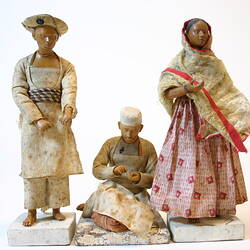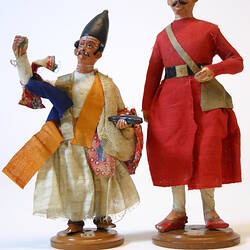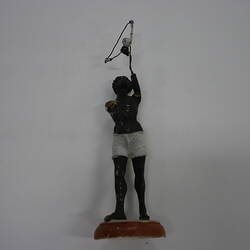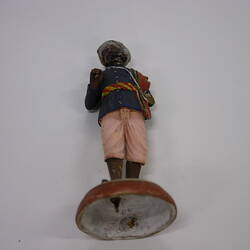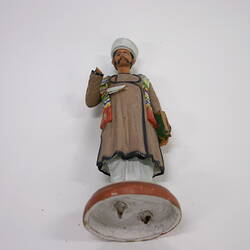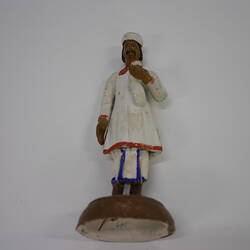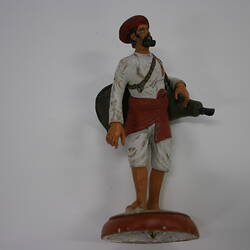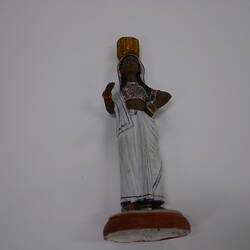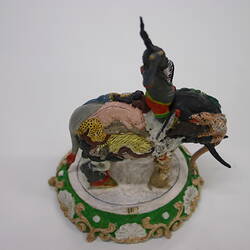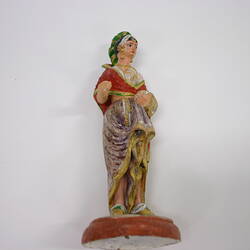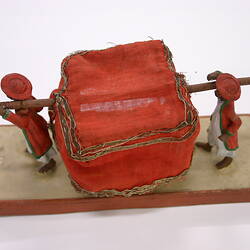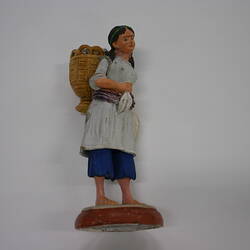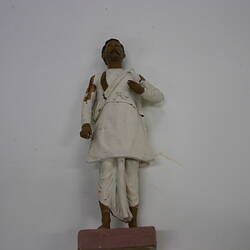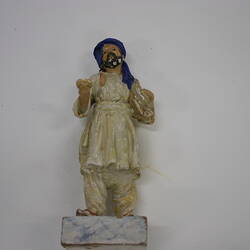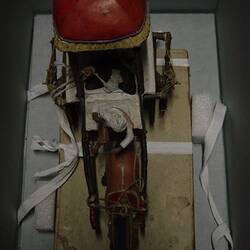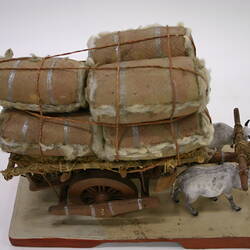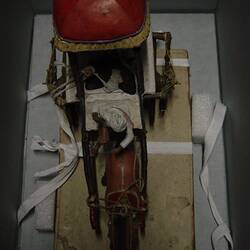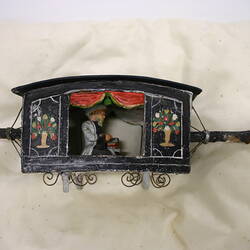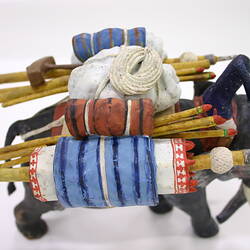Lucknow figures are created by tooling and carving clay in a 'green stage' (a process that references Italian stone carving). The figures are then painted. Stylistically, Lucknow figures have a neo-classical, Italian-style fluidity to their dress (Trivedi, 1996, p. 40; Watt, 1903, p. 89). Trivedi attributes the Italian style and technique of modelling adopted by Lucknow potters to General Claude Martin (1735-1800) a Frenchman who went to India with the French East India Company in 1751 (Trivedi, 1996, p. 40; Llewellyn-Jones, 1999, p. 165). Martin became one of the richest Europeans in India. When he purchased Constantia (his second estate in Lucknow) in 1780 he commissioned local sculptors to create stone and stucco figures, in Greek and Italian styles, for the grounds. The popularity of this modelling style spread throughout Lucknow and began to permeate other art-forms, notably small clay figure modelling. In the early 19th century the likeness of clay figures to Italian terracottas was accentuated by the application of a red ochre coating; this style of decoration declined after the annexation of Awadh in 1856 (Trivedi, 1996, p. 40). While Lucknow clay figures were popular with European tourists, it was models of fruits and vegetables - said to be so lifelike they defied detection of their artifice unless handled - that Lucknow potters were renowned for, both in India and internationally (Mukharji, 1888, pp. 69-70).
The Lucknow figures were cheaper than the Krishnanagar models with prices at the 1888 Glasgow International Exhibition being: R30 for a Sati (widow burning) scene and R40 for a marriage procession scene. However, the individual miniature figures were around the same price, with the Lucknow figures selling from R9 to R24 a dozen (Mukharji, 1888).
References:
Llewellyn-Jones R. (1999). 'Claude Martin: A Very Ingenious Man', Asian Affairs, 30(2), pp. 164-167.
Llewellyn-Jones, Rosie (2003). A Man of Enlightenment in Eighteenth Century India: The Letters of Claude Martin, 1766-1800, London, Orient Longman.
Mukharji, T. N. (1888). Art Manufactures of India: specially compiled for the Glasgow International Exhibition, 1888, Calcutta, Superintendent of Government Printing.
Trivedi, Madhu (1996). 'Encounter and Transition: European Impact in Awadh (1765-1856)', In A. J. Qaisar, S. Verma and M. Habib, eds. pp 17-48. Art and Culture: Endeavours in Interpretation, India, Abhinav Publications.
Watt, George (1903). Indian Art at Delhi, 1903: Being the Official Catalogue of the Delhi Exhibition, 1902-1903, Calcutta: Superintendent of Government Printing.
More Information
-
Keywords
-
Authors
-
Article types

